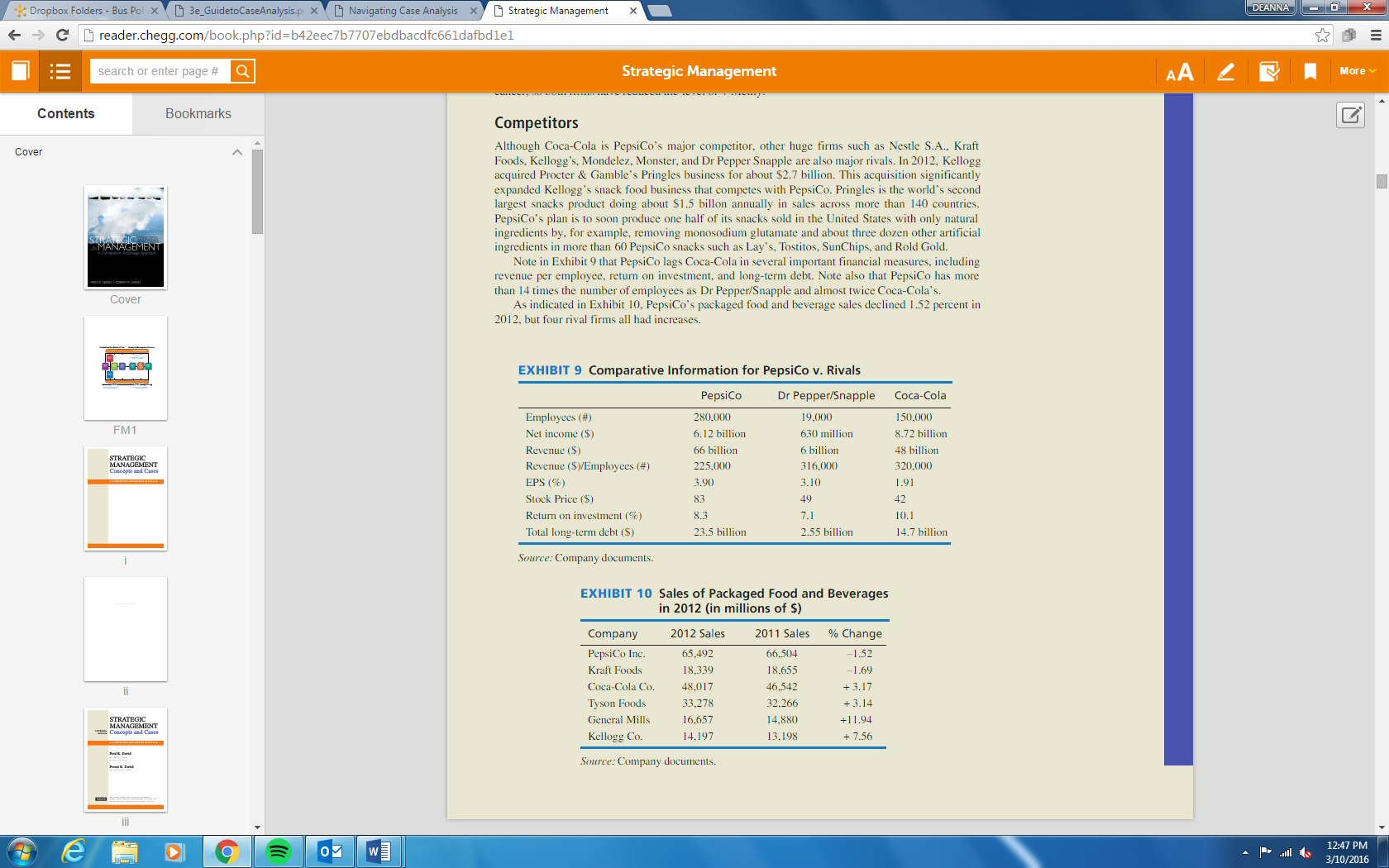Question
EXERCISE 8A Develop Product Positioning Maps for PepsiCo Purpose Organizations continually monitor how their products and services are positioned relative to competitors. Product positioning maps,
EXERCISE 8A
Develop Product Positioning Maps for PepsiCo
Purpose Organizations continually monitor how their products and services are positioned relative to competitors. Product positioning maps, often called perceptual maps, provide useful strategic information for marketing managers as well as corporate executives responsible for strategic planning. PepsiCo uses perceptual maps in strategic planning.
Instructions
Step 1 Review the competitors section in the Cohesion Case on PepsiCo. Review both PepsiCo and Coca-Cola Companys corporate websites especially in terms of brands and products.
Step 2 PepsiCo needs six product positioning (perceptual) maps that reveal the companys competitive position vs Coca-Cola in (1) sports/energy drinks, (2) bottled water, (3) juices, (4) carbonated beverages, (5) sparkling beverages, and (6) teas and coffees.
Step 3 Select one area (brand category) and prepare an excellent perceptual map for PepsiCos chief marketing officer (CMO).

Step by Step Solution
There are 3 Steps involved in it
Step: 1

Get Instant Access to Expert-Tailored Solutions
See step-by-step solutions with expert insights and AI powered tools for academic success
Step: 2

Step: 3

Ace Your Homework with AI
Get the answers you need in no time with our AI-driven, step-by-step assistance
Get Started


